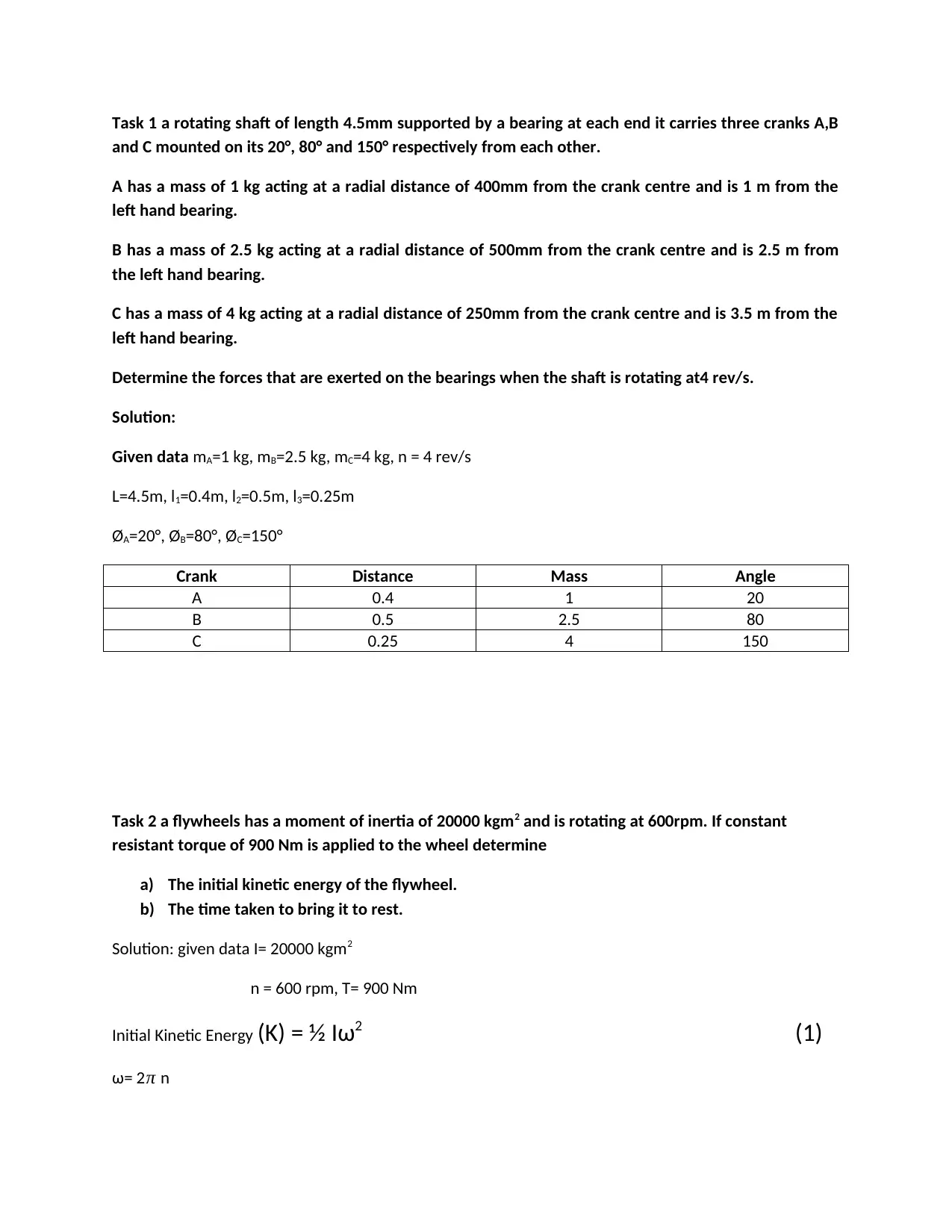Mechanical Engineering Assignment: Shafts, Flywheels, and Engines
VerifiedAdded on 2022/10/18
|4
|785
|12
Homework Assignment
AI Summary
This document presents solutions to a mechanical engineering assignment. The assignment includes four tasks: determining bearing forces on a rotating shaft with multiple cranks, calculating the initial kinetic energy and time to rest for a flywheel with an applied torque, finding the mass of a flywheel to maintain engine speed within a specified range, and calculating the common speed and loss of kinetic energy when two flywheels are connected. The solutions involve applying principles of rotational dynamics, including moment of inertia, angular velocity, torque, and conservation of angular momentum, to solve for the required parameters. The document provides detailed steps and calculations for each task, demonstrating the application of relevant formulas and concepts.
1 out of 4





![[object Object]](/_next/static/media/star-bottom.7253800d.svg)